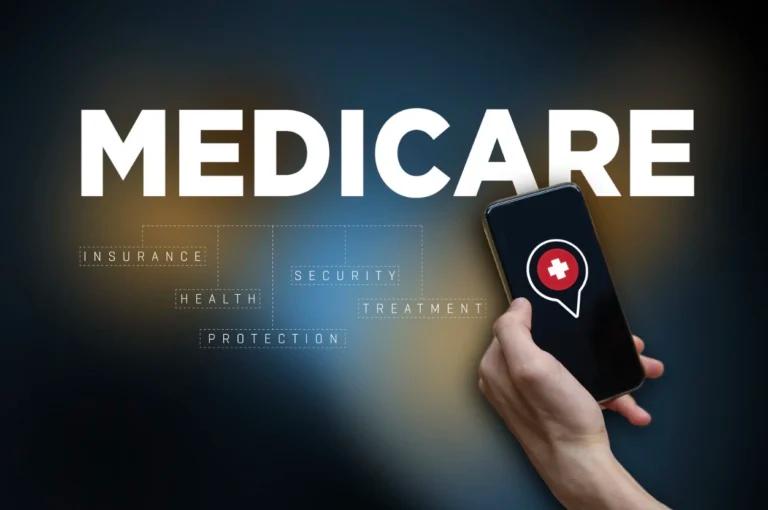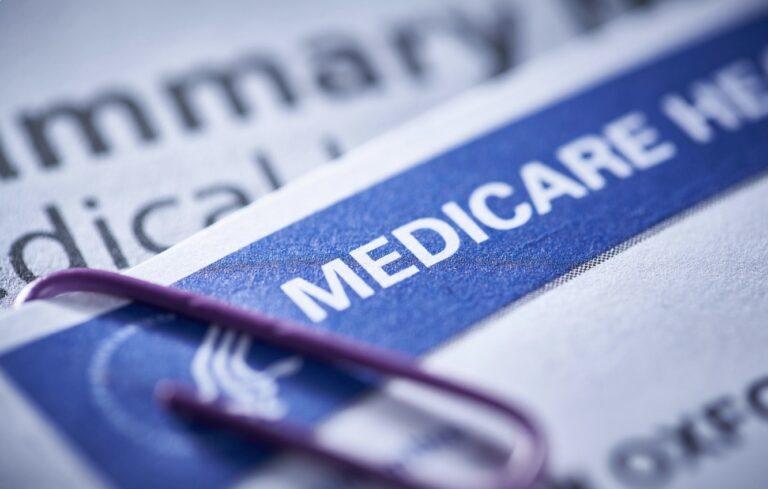
September 17, 2025 (Current Version)
November 17, 2023
Medicare Part D is a vital program that provides prescription drug coverage to millions of Medicare beneficiaries. To ensure that this drug plan remains affordable and accessible, the Inflation Reduction Act (IRA) of 2022 has introduced significant changes to the Part D benefit design. These changes to the Medicare program’s Part D drug benefits, aim to reduce out-of-pocket drug costs for prescription drugs including making vital vaccines such as the shingles vaccine free and providing greater financial security for Medicare enrollees.
The current Medicare Part D benefit design (2023)
Before diving into the upcoming changes, let’s first understand the current structure of the Medicare Part D benefit design in 2023. The benefit design consists of four distinct phases, each with different cost-sharing arrangements between Part D enrollees, Part D plans, drug manufacturers, and Medicare. Here’s a breakdown of the current design:
1. Deductible phase
During the deductible phase, Part D enrollees are responsible for 100% of their drug costs, up to a maximum of $505 in 2023. While not all Medicare Part D plans charge a deductible, many stand-alone healthcare plans do impose this standard deductible.
2. Initial coverage phase
In the initial coverage phase, Part D enrollees pay 25% of total drug costs, while Part D plans cover the remaining 75%, up to a total drug cost threshold of $4,660 in 2023. It’s important to note that most Part D plans charge a mix of copayments and coinsurance during this phase, rather than a standard 25% coinsurance rate.
3. Coverage gap phase
The coverage gap phase, also known as the “donut hole,” requires Part D enrollees to pay 25% of total Part D costs for both brand-name and generic drugs. Part D plans contribute 75% of the cost for generic drugs and 5% for brand-name drugs. Additionally, drug manufacturers provide a 70% price discount on brand-name drugs, but no discount on generics.
4. Catastrophic Phase
Once Part D enrollees reach a certain out-of-pocket threshold, they qualify for catastrophic coverage. In 2023, this threshold is set at $7,400. During the catastrophic phase, Medicare covers 80% of total drug costs, Part D plans pay 15%, and Part D enrollees are responsible for the remaining 5%. Note that this estimate is based on using brand-name drugs only.
Changes coming in 2024
In 2024, the Inflation Reduction Act introduced several changes to the Medicare Part D benefit design, with a focus on reducing out-of-pocket costs for Part D enrollees. Let’s explore these changes:
1. Elimination of 5% Coinsurance requirement in the Catastrophic Phase
One significant change in 2024 is the elimination of the 5% coinsurance requirement for Part D enrollees in the catastrophic phase. This means that once Part D enrollees without low-income subsidies (LIS) reach the catastrophic coverage threshold, they will no longer be required to pay 5% of their drug costs. This effectively caps out-of-pocket spending for Part D enrollees.
2. Increased contribution by Part D plans in the catastrophic phase
Starting in 2024, Part D plans will be required to pay 20% of total drug costs in the catastrophic phase, up from the previous contribution of 15%. This change aims to alleviate the financial burden on Part D enrollees by shifting a larger share of costs to the health insurance plans.
3. Changes to out-of-pocket threshold and savings for Part D enrollees
In 2024, the catastrophic threshold will be set at $8,000, including both out-of-pocket spending by Part D enrollees and the value of the manufacturer price discount on brand-name drugs in the coverage gap phase. This means that Part D enrollees who exclusively use brand-name drugs can expect to spend approximately $3,300 out of pocket before reaching the catastrophic phase. Once they reach this phase, they will no longer have any additional costs for their medications.
To better understand the impact of these changes, let’s take a closer look at the savings for Part D enrollees using high-cost medications such as cancer treatments. In 2021, the top five drugs with the highest per capita Part D expenditures were Revlimid, Pomalyst, Imbruvica, Jakafi, and Ibrance. The annual out-of-pocket costs for these drugs in 2023 range from over $11,000 to nearly $15,000. Additionally, the out-of-pocket costs for each drug in the catastrophic phase alone range from around $8,000 to nearly $12,000. With the elimination of the 5% coinsurance requirement in 2024, Part D enrollees without LIS who rely on these high-cost medications can expect significant savings.
4. Part D plans’ increased share of total drug costs in the catastrophic phase
In 2025, Part D plans will be required to bear a larger share of total drug costs in the catastrophic phase. Medicare’s share of costs (reinsurance) will decrease from 80% to 20% for brand-name drugs and 80% to 40% for generic drugs. This change aims to address concerns about the increasing reinsurance payments made by Medicare to Part D plans over time, which accounted for nearly half of total Part D spending in 2022.
5. Manufacturer price discounts and plan costs in the initial coverage phase
Starting in 2025, there will be changes to the manufacturer discounts and plan costs in the initial coverage phase. Drug manufacturers will be required to provide a 10% discount on brand-name drugs during this phase, replacing the 70% drug price discount in the coverage gap phase. Additionally, Part D plans will pay 65% of the costs for brand-name drugs.
Additional Changes to Medicare Part D
In addition to the benefit design changes discussed above, there are other notable changes coming to Medicare Part D in the near future. These changes aim to enhance affordability, accessibility, and financial security for Medicare enrollees. Here are some key changes:
1. Out-of-pocket cost limit for insulin
As of 2023, the out-of-pocket cost for insulin products is limited to no more than $35 per month in all Part D plans. This change provides much-needed relief for Medicare beneficiaries who rely on insulin to manage their diabetes.
2. Expansion of low-income subsidy (LIS) program
Starting in 2024, individuals with Medicare who have incomes up to 150% of the federal poverty level and resources within the limits for partial low-income subsidy benefits will be eligible for full benefits under the Part D Low-Income Subsidy (LIS) Program. This change eliminates the partial LIS benefit currently available to individuals with incomes between 135% and 150% of the federal poverty level.
3. Adjustment of base beneficiary premium calculation
In 2024 and beyond, the calculation of the base beneficiary Part D premium will be adjusted to limit price increases to no more than 6% from the prior year. This adjustment aims to provide stability and predictability in premium costs for Medicare beneficiaries. However, it’s important to note that individual Part D plan premiums and annual plan-level premium increases will still vary.
4. Spreading out-of-pocket costs over the year
Starting in 2025, Part D enrollees will have the option to spread out their out-of-pocket costs over the course of the year, rather than facing high costs in any given month. This change provides greater flexibility and financial planning for Medicare beneficiaries.
In conclusion, the Inflation Reduction Act of 2022 has introduced significant changes to the Medicare Part D benefit design. These changes aim to reduce out-of-pocket prescription drug costs and provide greater financial security for Medicare enrollees. With modifications to the catastrophic phase, increased contributions by Part D plans, and adjustments to out-of-pocket thresholds, these changes will have a significant impact on the affordability of medications for Part D enrollees. It’s crucial for Medicare beneficiaries to review their current plans and consider these changes when making decisions about their prescription drug coverage. By staying informed and proactive, beneficiaries can ensure that they have the best plan to meet their unique needs and optimize their coverage under Medicare Part D.
Sources
- Changes to Medicare Part D in 2024 and 2025 Under the Inflation Reduction Act and How Enrollees Will Benefit | KFF
- Changes to Medicare Part D in 2024 and 2025 – Patient Empowerment Network
Medical Disclaimer
NowPatient has taken all reasonable steps to ensure that all material is factually accurate, complete, and current. However, the knowledge and experience of a qualified healthcare professional should always be sought after instead of using the information on this page. Before taking any drug, you should always speak to your doctor or another qualified healthcare provider.
The information provided here about medications is subject to change and is not meant to include all uses, precautions, warnings, directions, drug interactions, allergic reactions, or negative effects. The absence of warnings or other information for a particular medication does not imply that the medication or medication combination is appropriate for all patients or for all possible purposes.






